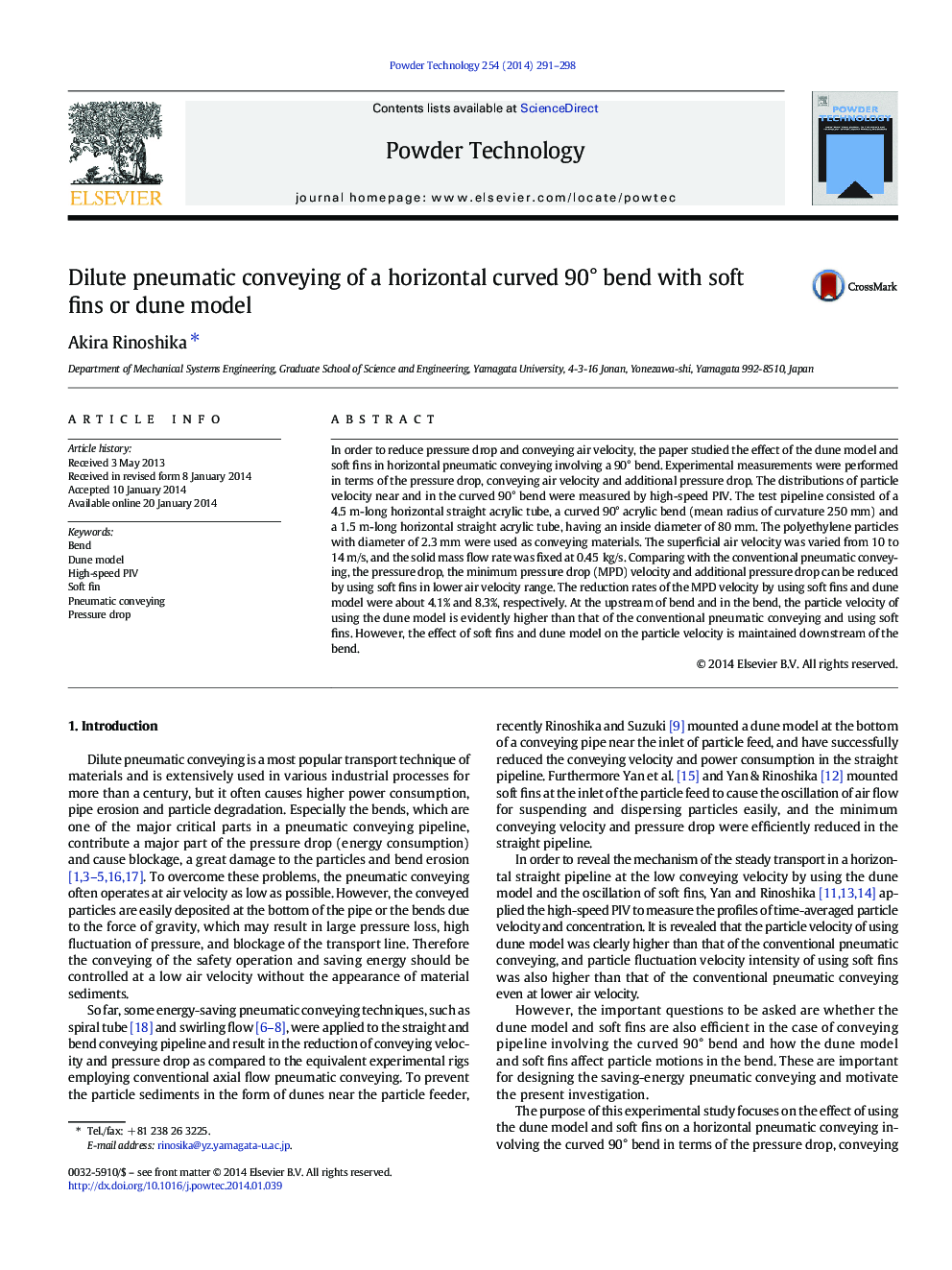| Article ID | Journal | Published Year | Pages | File Type |
|---|---|---|---|---|
| 236255 | Powder Technology | 2014 | 8 Pages |
•A pneumatic conveying with a bend using fins or dune model was studied.•The pressure drop, additional pressure drop and particle velocity were measured.•The pressure drop and conveying velocity were reduced by soft fins.•Particle velocity of dune model was higher than that of others near and in the bend.•Effect of fins and dune model on the particle velocity remains in the bend.
In order to reduce pressure drop and conveying air velocity, the paper studied the effect of the dune model and soft fins in horizontal pneumatic conveying involving a 90° bend. Experimental measurements were performed in terms of the pressure drop, conveying air velocity and additional pressure drop. The distributions of particle velocity near and in the curved 90° bend were measured by high-speed PIV. The test pipeline consisted of a 4.5 m-long horizontal straight acrylic tube, a curved 90° acrylic bend (mean radius of curvature 250 mm) and a 1.5 m-long horizontal straight acrylic tube, having an inside diameter of 80 mm. The polyethylene particles with diameter of 2.3 mm were used as conveying materials. The superficial air velocity was varied from 10 to 14 m/s, and the solid mass flow rate was fixed at 0.45 kg/s. Comparing with the conventional pneumatic conveying, the pressure drop, the minimum pressure drop (MPD) velocity and additional pressure drop can be reduced by using soft fins in lower air velocity range. The reduction rates of the MPD velocity by using soft fins and dune model were about 4.1% and 8.3%, respectively. At the upstream of bend and in the bend, the particle velocity of using the dune model is evidently higher than that of the conventional pneumatic conveying and using soft fins. However, the effect of soft fins and dune model on the particle velocity is maintained downstream of the bend.
Graphical abstractFigure optionsDownload full-size imageDownload as PowerPoint slide
